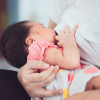
 IJCP Editorial Team
IJCP Editorial Team
Managing Acne Vulgaris While Pregnant or Breastfeeding
Acne vulgaris is a common problem for women during pregnancy and lactation due to hormonal and physiological changes that occur during these stages. Many effective acne treatments for the general population are not recommended during pregnancy or breastfeeding, yet guidelines for managing acne in these populations are limited. The present review summarizes the safety and efficacy of various acne treatments during pregnancy and breastfeeding. The approach to managing acne during these stages should consider the severity of the condition to reduce the risk. Topical therapies like benzoyl peroxide, azelaic acid, or keratolytic are suitable for mild-to-moderate cases. For moderate-to-severe acne, systemic treatments, including penicillin, amoxicillin, cephalexin, and erythromycin, may be appropriate, but it is crucial to consider the teratogenicity of the drugs and relevant medical history of the mother and infant. For cases that are not responsive to other treatments, oral or intralesional corticosteroids, as well as laser and light therapies, may be considered. This review serves as an updated reference to assist physicians in making decisions about managing acne in pregnant and lactating patients.
Ly S, Kamal K, Manjaly P. et al. Treatment of Acne Vulgaris During Pregnancy and Lactation: A Narrative Review. Dermatol Ther (Heidelb).2023; 13:115–130. https://doi.org/10.1007/s13555-022-00854-3

IJCP Editorial Team
Comprising seasoned professionals and experts from the medical field, the IJCP editorial team is dedicated to delivering timely and accurate content and thriving to provide attention-grabbing information for the readers. What sets them apart are their diverse expertise, spanning academia, research, and clinical practice, and their dedication to upholding the highest standards of quality and integrity. With a wealth of experience and a commitment to excellence, the IJCP editorial team strives to provide valuable perspectives, the latest trends, and in-depth analyses across various medical domains, all in a way that keeps you interested and engaged.












Please login to comment on this article